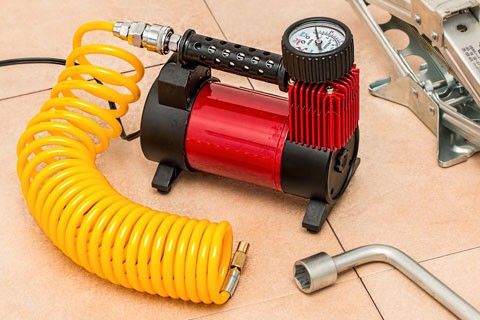Renault Vel Satis Tire pressure
Renault Vel Satis Reifendruck
Renault Vel Satis Pression des pneus
Renault Vel Satis Presion de llantas
Renault Vel Satis Pressao de pneus
Wheel pressure should be checked regularly, ideally check your tire pressure on a monthly basis. Always check your car tire pressure two hours after parking the automobile.
Remember to regularly check the condition of the valves to ensure a perfect seal, and can provide longer life.
If you need to have your 4 wheels checked, do not forget to check the pressure of your extra tire.
In winter, when the temperature is cold, it is sometimes advisable to boost the inflation pressure.

Disclaimer: We cannot and do not guarantee that the material on this website is absolutely current and accurate, despite the fact that every effort has been made to keep it as current and correct as possible. This website’s content is delivered on a “as is” and “as available” basis. You agree that your use of the platform is at your sole risk. We disclaim any and all warranties.
There are a few solutions to check or inflate your tires: go to a professional equipped to use the inflation equipment provided by some gas stations/washhouses, or equip yourself with an inflation gun compressor.
The majority of faulty tires are the result of inadequate tire pressure control. To ensure improved grip and protection, car makers prescribe a specific pressure for each model.
Renault Vel Satis Where will I find information on pressure?
The prescribed pressure varies depending on the vehicle type. It is sometimes stated in the owner’s manual, on the edge of the door, or on the fuel tank handle. It is expressed in the form of two numbers, in bar units, usually about 2. The first number represents the pressure in the front tyres, while the second represents the pressure in the rear tires.
Depending on the car load, the tire pressure can vary. Thus, the recommended pressure for a loaded vehicle should be added to 0.2 bar.
When to check the pressure
Tire pressure should be monitored frequently and at strategic times.
Control is essential before a long journey, for example, to limit the risks of deterioration and usure.
The pressure should be monitored every two weeks for regular use. Finally, we suggest that the pressures be reviewed every month with less daily use, taking into account the fact that a tire is tested when it’s cold.
Summer – winter tire pressure
When measuring the tire pressure, consider the seasons as well, as outside temperatures impact the inside pressure of the tire.
The addition of 0.2 bar to winter tyres is also advised.
It is important to monitor the vehicle’s tyre pressure on a regular basis. Under-inflated tires will compromise your safety in the car by reducing grip and making braking less efficient.
Moreover, an underinflated tire has been seen to shorten its service life considerably by 20 per cent at a lower level of 0,5 bar than that suggested by the inflation pressure. With underinflated tyres, even the consumption of fuel is increasing.
Finally, the under-inflated tyre is subjected to excessive stress and can burst while traveling at high speeds.
| Renault Vel Satis | |
| 2.0 Turbo | |
| 225 55 R17 101V XL | |
| Rear Min. | 2.0 |
| Rear Max. | 2.0 |
| Front Min. | 2.1 |
| Front Max. | 2.2 |
| Renault Vel Satis | |
| 2.0 Turbo | |
| 245 45 R18 100W XL | |
| Rear Min. | 2.0 |
| Rear Max. | 2.0 |
| Front Min. | 2.1 |
| Front Max. | 2.2 |
| Renault Vel Satis | |
| 2.2 dCi | |
| 225 55 R17 101V XL | |
| Rear Min. | 2.0 |
| Rear Max. | 2.0 |
| Front Min. | 2.2 |
| Front Max. | 2.3 |
| Renault Vel Satis | |
| 2.2 dCi | |
| 245 45 R18 100W XL | |
| Rear Min. | 2.0 |
| Rear Max. | 2.0 |
| Front Min. | 2.3 |
| Front Max. | 2.4 |
| Renault Vel Satis | |
| 3.0 dCi V6 | |
| 225 55 R17 101V XL | |
| Rear Min. | 2.0 |
| Rear Max. | 2.0 |
| Front Min. | 2.3 |
| Front Max. | 2.4 |
| Renault Vel Satis | |
| 3.0 dCi V6 | |
| 245 45 R18 100W XL | |
| Rear Min. | 2.0 |
| Rear Max. | 2.0 |
| Front Min. | 2.4 |
| Front Max. | 2.5 |
| Renault Vel Satis | |
| 3.5 V6 | |
| 225 55 R17 101W XL | |
| Rear Min. | 2.0 |
| Rear Max. | 2.0 |
| Front Min. | 2.2 |
| Front Max. | 2.5 |
| Renault Vel Satis | |
| 3.5 V6 | |
| 245 45 R18 100W XL | |
| Rear Min. | 2.0 |
| Rear Max. | 2.0 |
| Front Min. | 2.3 |
| Front Max. | 2.6 |
Links :
Tire pressure gauge
TPMS